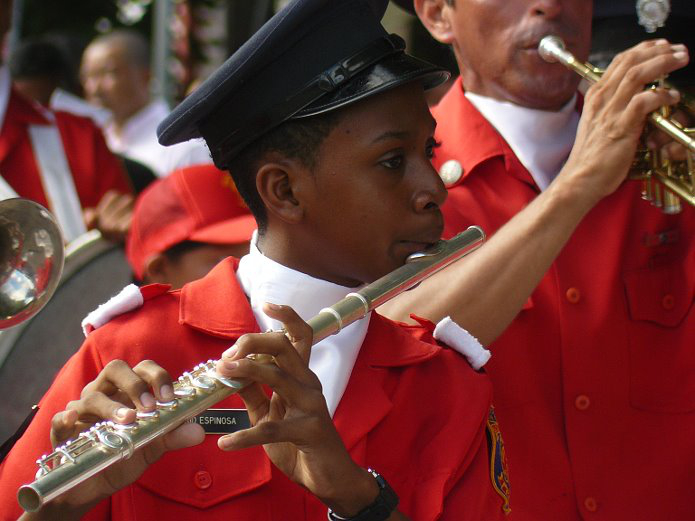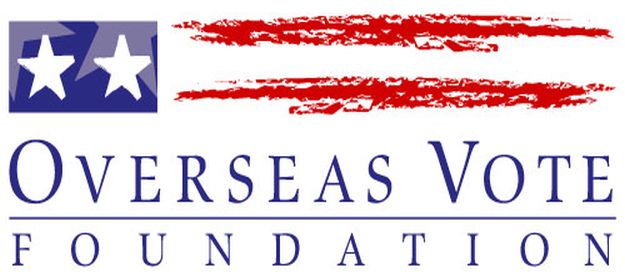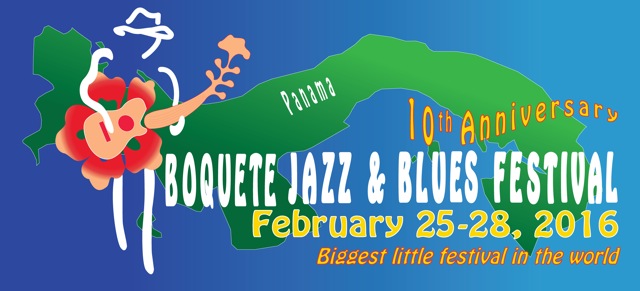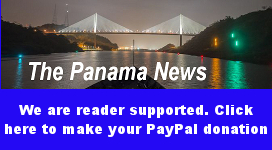
Many Novembers ago…
by Eric Jackson
So what are these “Fiestas Patrias” really all about? Yes, parades, flags, meat on a stick, marching bands, speeches that aim to be inspiring, anniversaries of a separation from Colombia and of an earlier one from Spain, and of the foundation of perhaps Panama’s most beloved public institutions, the fire department (Cuerpo de Bomberos). But you have to go across the sea and back to the Crusades to begin to understand.
Crusaders, inquisitors and heretics
In an isolated Spanish context, the Crusades were a great success. They went on for longer and culminated in 1492, with the fall of Granada and the expulsion of the Arabs who had ruled parts of the Iberian Peninsula for more than 700 years and of the Jewish community that had prospered under generally tolerant Moorish rule. Along the way many a Muslim and many a Jew had converted to Catholicism. For those who only pretended — the clandestine Crypto-Jews and the secretly Muslim Moriscos — Spain’s Catholic monarchy and The Vatican collaborated to create the Spanish Inquisition, the scourge of unbelievers and heretics.
In a few years the heresies would multiply with the Reformation. From the start the Inquisition was interested in stamping out one group of heretics, the underground successors of the Knights Templar. This group, led at their formal end in 1307 by the French knight Jacques de Molay, served as the bankers for those other Crusades, in the Holy Land of the Levant. That part of the Crusades did not go so well for the Catholic zealots. It did get Christians living in Jerusalem for a long time. The Knights Templar, as shrewd bankers operating in a city with large numbers of Jews, Muslims and Christians, came to the conclusion that whatever concept of God a man might have was not so important as his character, such that a devout and reputable Muslim or Jew was a better risk for loans than a disreputable Catholic. De Molay got burned at the stake for that, but some of his followers persisted in their beliefs and carried on an underground movement that was later to emerge as freemasonry.
So, with Spain increasingly intolerant starting in the same year when Christopher Columbus bumped into the West Indies and didn’t know where he was but claimed it for Spain and Catholicism anyway, where was a Spaniard who would rather not have an appointment with the Inquisition to go? Many Muslims and Jews fled to North Africa, Turkey or the Holy Land, and some Jews found refuge in Portugal for a time. And in numbers about which no records were kept, a lot of Crypto-Jews and probably a lesser number of Moriscos made their way to Spain’s new possessions in the Americas. The now US city of Albuquerque is famous for the underground Jews among its founders. There are legends about hidden Jews among the founders of Chiriqui’s provincial capital of David, and later on among those refugees who fled Henry Morgan’s raid to found Las Tablas.
For sincere Catholics in those parts of Spain from which the Moors had been ousted, these were still conquered lands where lisping aristocrats from the north had all of the advantages. That made a life at sea or in the army a better set of options for the young men. Do you wonder why Latin Americans don’t lisp their “s” and “z” sounds as in Castilian Spanish? It’s because our dialects trace much more of their ancestry to Andalusia than to Castile.
Did freemasons and other heretics also flee from Spain to the Americas? It might be supposed that they did, but if so they didn’t leave records of it for the authorities. For most of the Spanish colonial period in Panama, non-Catholic religious beliefs could get someone sent to the Inquisition court in Cartagena — whose work was not so much about Jews, Muslims, Protestants or Masons as it was with slaves who persisted in practicing African religions. After the early scandals of clerical cruelty were exposed by Bartolomé de las Casas, the Vatican stripped the Inquisition of its jurisdiction over the indigenous peoples of the Americas.
The Spanish conquest of Panama got underway at about the same time that Martin Luther’s annoyance with the Vatican’s decadence was growing, and surely the Reformation and the many decades of religious wars that followed upon it grew the numbers of free-thinking Masons all across Europe and into most European colonies. Was it so in the Spanish Empire? Probably less so, and on a time lag. If you care to look at the beliefs and actions of the protagonists, the attacks of Francis Drake and Henry Morgan on Panama belong to the story of the Wars of the Reformation, even if Morgan’s rampage through here came 22 years after the Peace of Westphalia ended the religious warfare on the European continent.
It was not entirely unreasonable to attack the Catholic Church in the process of assaulting the Spanish Crown here or anywhere else in the Americas at that time. The Vatican ceded much to the temporal authorities in Spanish America, in exchange for a cut of the action. Under the patronato system, Spanish authorities built and financed the churches, paid for their activities and appointed both the parish priests and the colonial hierarchy. The clergy of Spanish America was forbidden to take up any matters directly with the Vatican. Especially in the early decades of the colonial era the church got a lot of gold, silver and precious stones out of the arrangement. As time went by any line of distinction between church and state became broken and blurred in Spanish America. The bishops tended identify with and be just as conservative as the viceroys sent from Spain to rule the American colonies.
Heresy and independence gain the upper hand
The American Revolution, which was led by freemasons, and the French Revolution, which had a major anti-clerical component, certainly boosted masonic membership, activity and thinking throughout Latin America. In Spain itself, freemasonry was first recorded in 1728 and in Mexico a few years later. South America’s great liberators — Simón Bolívar, José de San Martín, Bernardo O’Higgins and a number of their associates and followers — were masons under the influence of the Venezuelan freemason and independence activist Francisco de Miranda.
The liberators’ independence movements got their openings from Spain’s catastrophes. In 1808 Napoleon forced out the Bourbon king of Spain, replacing him with his drunken and incompetent older brother Joseph. That Bonaparte has gone down in Spanish history politely as José I but popularly as Pepe la Botella. French rule was brutal, Spanish resistance became generalized and many of Spain’s francophiles fled into exile either in France or the Americas. The restoration of the Bourbon King Fernando VII — “El Rey Felón” — brought waves of bloody repression to Spain and professions of loyalty from Creole elites in the Americas. However, the damage had been done. During the Napoleonic interregnum Latin Americans had become used to making do without directions from Madrid, and the Catholic Church went on in the Americas without so much state sponsorship or direction.
After repeated unsuccessful pro-independence uprisings in Venezuela, in early 1819 forces loyal to Spain once again defeated forces that Simón Bolívar had mustered. Bolívar’s army, which was bolstered by a “British Legion” that was actually mostly Irish, was driven into a wilderness where it was presumed that its members would scatter and die. Instead they slogged across swamps, hacked their way through the jungle, scaled the snow-capped Andes, took the Spanish Army by surprise at Boyaca and marched unopposed into Bogota. The Viceroy of New Granada, Spain’s governor for what are now Colombia, Ecuador, Venezuela and Panama, fled to Panama. Bolivar headed back to Venezuela and ran the Spanish forces out of there before turning his attention to Ecuador.
Did a businesswoman lead Panama away from Spain?
So, with Spanish forces being routed all over South America, was Panama going to be the rump capital of a much reduced Viceroyalty of New Granada and the springboard for Spain’s reconquest of the Americas? Set aside the contagion of free thinking on the isthmus, the civil servants who had found that they didn’t much need Spain, the priests who found the mother church and the opinions of their own congregants more compelling than a mother country ruled by a heavy handed crook, and a demoralized Spanish Army — doing what Spain wanted Panama to do would be bad for business. We didn’t yet have a railroad or a canal but we were still the hub of a number of trade routes and the Felon King would have had us at war with our best customers.
Onto the scene came a foxy young businesswoman, or so the legend goes. There is no documentary evidence that Rufina Alfaro existed — but back in those days, there would not necessarily have been. As the story goes, the 22-year-old Señorita Alfaro made her living selling eggs and vegetables, including to the soldiers of the garrison in La Villa de Los Santos. That outpost had been reinforced and given draconian orders by the Spanish commander on the isthmus, the dreaded Colonel José Pedro Antonio de Fábrega y de las Cuevas. The charming young lady is said to have subverted the troops into giving up their posts in the face of a crowd she led on a march to their fort.
In any event La Villa de Los Santos and a number of other towns in the Interior held town meetings — cabildos abiertos — in mid-November of 1821. The resolution coming out of the November 10 one in Los Santos is generally credited as the first call for Panamanian independence from Spain. Thus El Grito de La Villa de Los Santos, one of the holidays we celebrate this month.
That both soldiers and parish priests went along with the rebellion in the Interior was noticed in Panama City. So was the restlessness of some of the troops, and of some of the jailers of political prisoners, in the city. With much of Panama City’s garrison off to fight Bolívar’s armies in Quito and many doubts about whether the remaining troops would fight for Spain and whether the people of Panama City would support them if they did, Colonel Fábrega had some serious rethinking to do. Instead of embarking on a civil war against the rebellious Interior, he went over to the independence camp. He consulted with the Catholic hierarchy and the richest families in town, bribed those troops still loyal to Spain into remaining passive, and called a cabildo abierto to which all of the pro-independence factions were invited. This November 28 gathering declared Panama’s independence from Spain and adhesion to Bolívar’s Gran Colombia. That’s the first reason for November 28 being a Panamanian holiday.
Note: the “other” November 28
Although that’s not part of the stated reason for November 28 being a national holiday, also on that day in 1885 a group of concerned Panama City citizens formed a volunteer fire department, the Cuerpo de Bomberos. It’s a beloved national institution that today has a core of professional firefighters and a larger group of part-time volunteers, plus the nation’s best marching bands. The anniversary is the occasion for November’s best if not biggest November parade, the Bomberos’ Torchlight Procession through Panama City. Usually the parade is on the last weekend of November, down Via España. This year there will be a November 2 procession, with firefighters gathering late in the afternoon at Parque Urraca and marching from there down to the Presidencia.
A tragic and comedic end to a troubled relationship
The more than 80-year marriage with Colombia was an unhappy one, with ephemeral federal systems, brief separations and bloody revolts along the way. Centrifugal forces were at work from day one in Gran Colombia, as they are in Colombia to this day. Venezuela and Ecuador spun away in 1830, and one does not well understand 21st century Colombian guerrillas and paramilitaries without recognizing the aspect of local and regional expressions of warlord power plays against the central authorities that is part of them. Panama is different from Colombia, and as time has marched on we have become ever more different. Our dialects of Spanish are different. We have different economies. If many Panamanians do strange things like putting ketchup on fried rice, Colombians putting mayonnaise in ceviche is even weirder to us. Different waves of immigration have given us different ethnic mixtures. It may be impossible to convince those wannabe geopolitical strategists who would manipulate the world from inside the Washington Beltway, but Panamanians are not Colombians.
When Panamanians were Colombians the isthmus was caught up in endless wars between Liberals and Conservatives, as often as not about whether the Catholic Church would be Colombia’s official religion. It was generally also about whether the wealthy rural landowners or wealthy urban commercial and industrial barons would be the dominant elite. Generally it started in an argument over who rigged or stole which election. The last Colombian war that was fought in Panama, the 1899-1902 Thousand Days’ War, left Panama City starving under a Conservative dictatorship and Cocle province devastated by a ferocious civil war which the Liberal guerrillas won.
The final break-up came over deals that Bogota made or could not make with foreign interests with respect to Panama. In the middle of the 19th century Bogota granted extraordinary powers, including police functions and permission to try and execute people, to a New York corporation, the Panama Railroad. Then it gave a concession to build a Panama Canal to French interests that failed, with the railroad company and some other New York investors left holding much of the stock in the moribund concession. Teddy Roosevelt was very interested in the United States picking up the project and doing it right, but the very special interest of the railroad and other shareholders in the French canal company was that a US canal effort get underway before the end of 1903, when the French canal concession would expire and they would have little to sell to the Americans. In the small world of isthmian politics the Conservatives had grabbed control of Panama City at the outset of the war in 1899 due to Liberal divisions and had exercised power brutally and incompetently, clinging onto and abusing their prerogatives in the city after the war had ended. The separation from Colombia was a coup organized by the railroad company with the collaboration of the local Conservative Party and a few turncoat Liberals, backed by the naval power of the United States. It came just in time for the New York investors to sell the French canal concession to the US government. That the United States then came to Panama on terms that few Panamanians found acceptable was of little consequence to the speculators who had acquired shares of an insolvent French company at bargain basement prices and were paid well above their true value out of the US Treasury.
The November 3 coup itself was carried out with large doses of bribery, treachery and comedy. There were but two deaths.
General Esteban Huertas, the 27-year-old one-armed commander of Colombian forces on the isthmus, tended to work out of Panama City, while the main Colombian garrison was housed in Colon. Huertas was part of the separation conspiracy, but the junior officers were not. Huertas ordered his subordinates to get on the train and come to Panama City for an urgent meeting. Somewhere near the middle of the isthmus, the engine decoupled from the junior officers’ car and sped away, leaving them stranded in the bush for the revolution.
Back in Colon it was a national holiday, with banks closed, but the Star & Herald — the English-language precursor of today’s La Estrella — went into its safe for the cash to buy much of the liquor in town, which was bestowed as a gift to the bored and now leaderless enlisted troops. With Huertas in the city making the transition from Colombian garrison commander to head of the Panamanian Army and the junior officers getting an unexpected rainforest wildlife experience, the troops got drunk. During their revelry the USS Nashville slipped into port and debarked its US Marine Corps detachment. It wasn’t until the morning of November 5 that the Colombian soldiers awoke from their alcoholic haze, noticed that people were celebrating and discovered that US forces controlled Colon’s streets. They were graciously offered the opportunity to get on a ship and go back to Colombia, which they took.
In Panama City’s Casco Viejo a crowd was gathered in the plaza in front of the cathedral, where the new junta declared Panamanian independence. Teddy Roosevelt immediately recognized the new US ally. The next day the new country’s flag was unfurled, which is why November 4 is a holiday too.
The Nashville was but one of 10 ships that Roosevelt sent to the isthmus. What was a Colombian naval commander who was duty-bound to resist the dismemberment of his country to do in such an impossible situation? At the very least, there was an obligation to avoid being accused of giving up without firing a shot. Thus a single cannon shot was fired. It hit a vegetable cart, killing the Chinese vendor and his loyal donkey. Duty thus discharged, the warship fled back to its Colombian home port.
The Conservatives rigged things to hold onto power in a Liberal-majority Panama for a few years, for example by declaring that the Liberal leader in Panama, Belisario Porras, wasn’t a citizen and couldn’t run for office. Panama was sick of war, and particularly of Colombia’s never-ending wars, so Liberal Panamanians went along with independence under Conservative auspices, and with a disagreeable American enclave cutting the country in two. Within seven years the Conservatives began a terminal election losing streak, and within a generation they were extinct in Panama.
This is Panama!
So isn’t all of that a good excuse for a month of parades, days at the beach, seasonal tropical cloudbursts and little actual work getting done? Does anyone need an excuse? This is Panama and it’s holiday season from now through Carnival.










